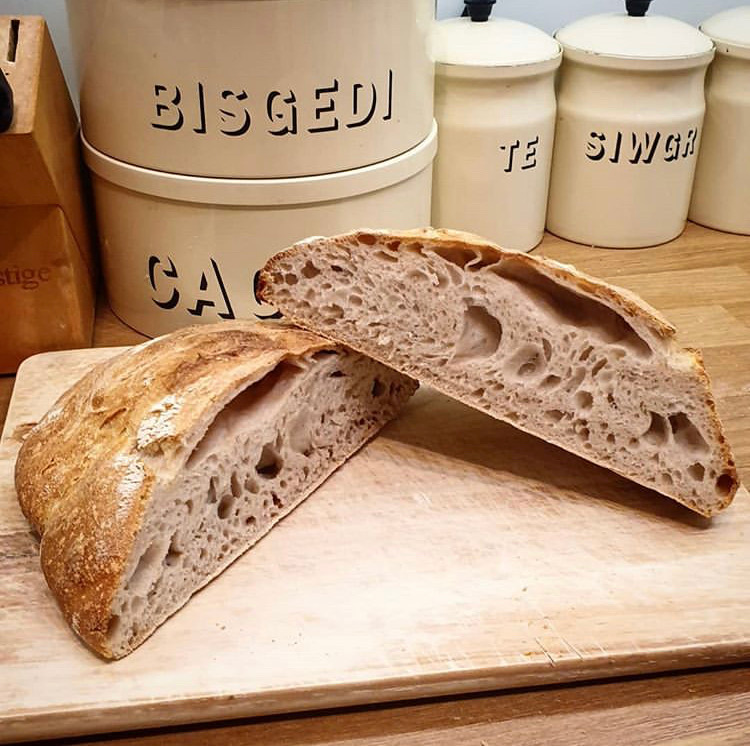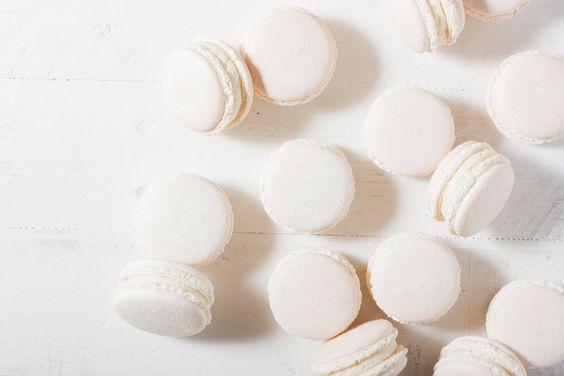Now that we have more time to spend in the kitchen, why not step out of our student-cooking comfort zones and challenge ourselves to some more adventurous recipes? Here are two in-depth recipes that’ll kill some time during lockdown.
Sourdough From Scratch
Sourdough sounds like it may be difficult to make but it’s not, it just takes a little time ÔÇö which we have a lot of right now. This recipe will show you how to make your own living “wild yeast” by fermenting flour and water, instead of buying yeast from the shop. Follow the days carefully, and by the end of the week you should have 2 delicious loaves of sourdough.
Recipe by Ceurwyn Humphreys
Creating your Sourdough Starter
What you’ll need:
- 1.2kg strong bread flour.
Day 1 ÔÇö Getting started
Mix 50g flour and 50g water together in a large glass or plastic jar, cover it with a breathable material and leave for 24 hours at room temperature.
Day 2 ÔÇö Double the contents
Add another 50g flour and water to your starter and leave for another 24 hours.
Day 3
Repeat but with 100g flour and 100g water this time.
Day 4
Repeat but with 200g flour and 200g water this time.
Day 5
Repeat but with 400g flour and 400g water this time.
Day 6
Repeat day 5 and leave for another 24 hours ÔÇö you now have your starter!
Baking your sourdough
*Makes 2 loaves*
What you’ll need:
- 800g strong bread flour
- 450ml water
- 10g salt
- 320g of your sourdough starter
Method:
- Add all of the ingredients together and mix until loosely combined.
- Pour the mixture on to a lightly floured surface.
- Kneed your dough ÔÇö this part takes a lot of time and patience. You need to be able to see through your dough without it ripping.
- Place your dough in a large bowl, cover with a tea towel and leave to prove for 3 hours.
- After leaving it prove, knead the dough until it’s the same size as it was 3 hours ago.
- Take 2 bowls and lay a tea towel in each, then dust some flour on them.
- Split your dough into two equal sized balls. Place them in each tea towel and dust a little flour on top. Fold the tea towels over the top of the dough and let them prove for another 3.5 hours.
- After 3.5 hours, preheat the oven to 230˚C and place an empty roasting tray inside.
- Unwrap your dough and flip them over onto some baking trays. Slice across your them.
- Pour some hot water into the roasting tray in order to create steam, before popping your dough into the oven for 30-35 minutes.
- Place your loaves on a cooling rack and wait until they have cooled before devouring!

Macarons
Recipe by Sai
I based my venture into macarons on the BBC good foods recipe, as whilst it is a bit difficult to follow, I had tried about 6 different easier versions, without success.
You will need:
170g icing sugar,
160g ground almonds (or almond flower)
120ml egg whites (around 4 medium eggs)
160g granulated sugar
Food colouring (optional)
- The first step is to separate the egg whites into two equal parts. This recipe uses a lot of bowls, so prepare quite some space to work on.
- Sieve the icing sugar and the ground almonds in one big bowl. Then sieve this mixture again, into one of the egg whites. From experience with macarons, this was the weird part, as you don’t need to whisk this batch of egg whites before combining it with the dry ingredients!
- This is the crucial step: whisking the egg whites to perfection. Take your second batch and start slowly whisking it. At the same time take your granulated sugar, add 30 ml (the recipe says 50, but from experience I’d recommend 30) of water and bring it to a boil. Whilst the recipe says it should be exactly 118ßÁÆC, as a student I have no way of knowing.
- Add the sugar syrup to the egg whites and whisk it until you can basically hold the bowl upside down. This step takes about 10 to 15 minutes, so get your phone ready, or you shall get bored.
- If you want some funky colours, now is the time to add food colouring to the mixture! Beware that food colouring will compromise the integrity of your egg whites, so don’t add too much!
- Now just mix it all together, either with a wooden or plastic spoon. Mix it together carefully and only mix until the batter is uniform, you don’t want to over-mix it.
- Preheat your oven to 150ßÁÆC/170ßÁÆC fan/gas 3-4.
- After lining a couple of baking trays with parchment paper, you need to get the batter into small lumps, about 2.5-3cm in diameter. Usually this is done with a piping bag, but if you don’t have one, like me, simply use a spoon. This step is also where your entire kitchen gets covered in white sticky goo, so don’t expect it to be neat and tidy.
- Now it’s important to let your trays with batter rest for at least 30 minutes.
- The last step is to bake the macarons for precisely 14 minutes, and then immediately transfer the baking paper to a cold surface.
- For the filling you can pretty much do anything, fill them with cream cheese and jam, or chocolate mousse, its up to you!
- Admire the results and don’t feel discouraged, macarons are very annoying and difficult to make. They’ll taste delicious!



